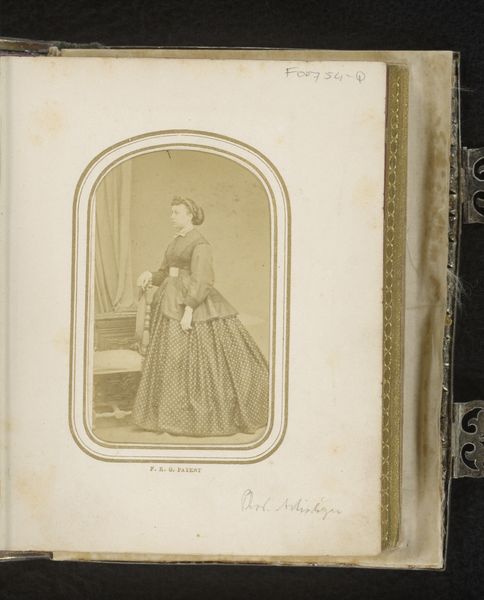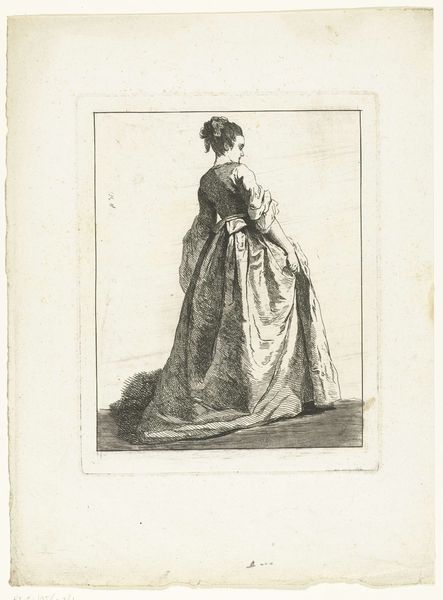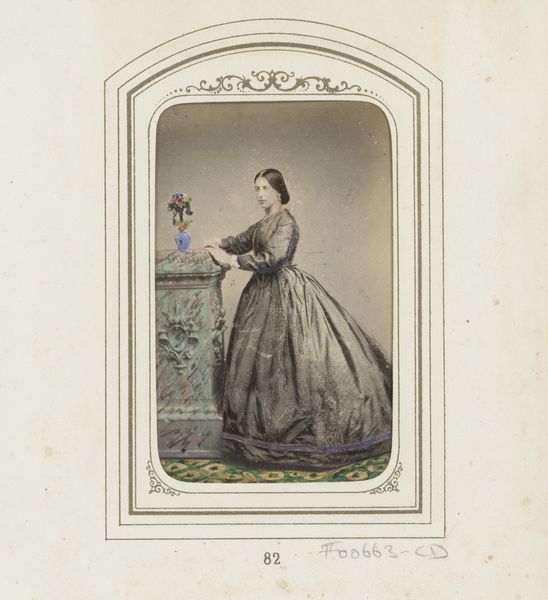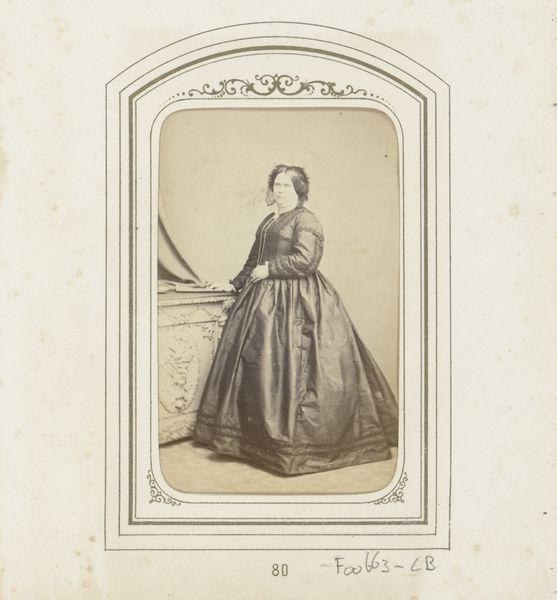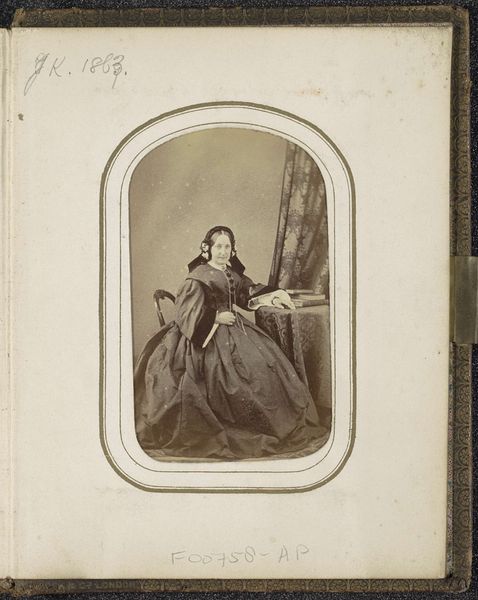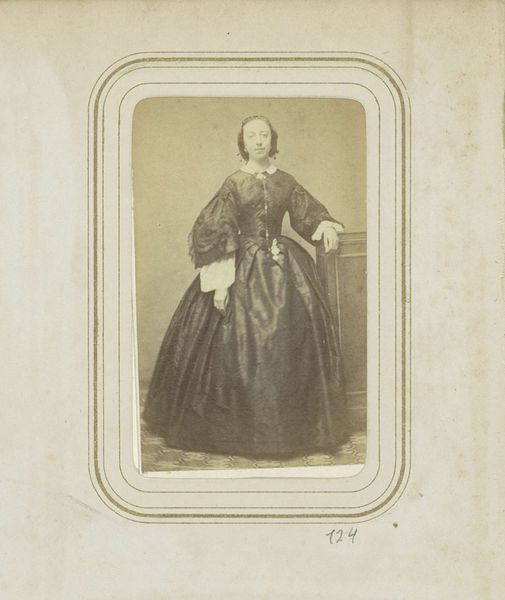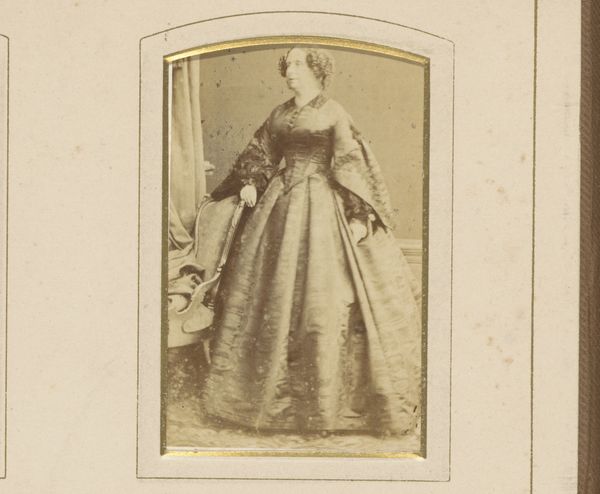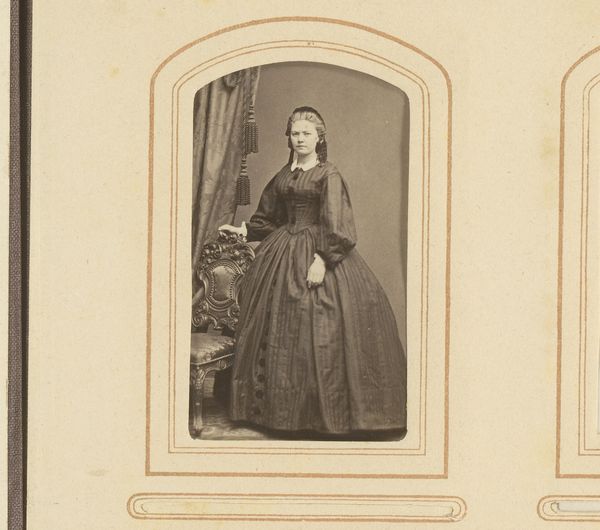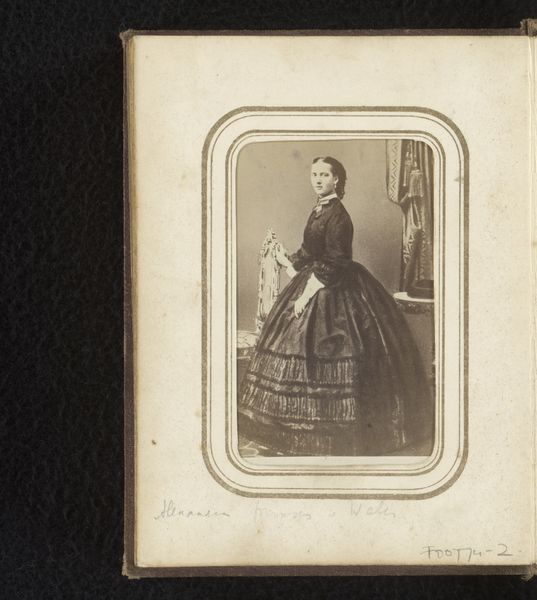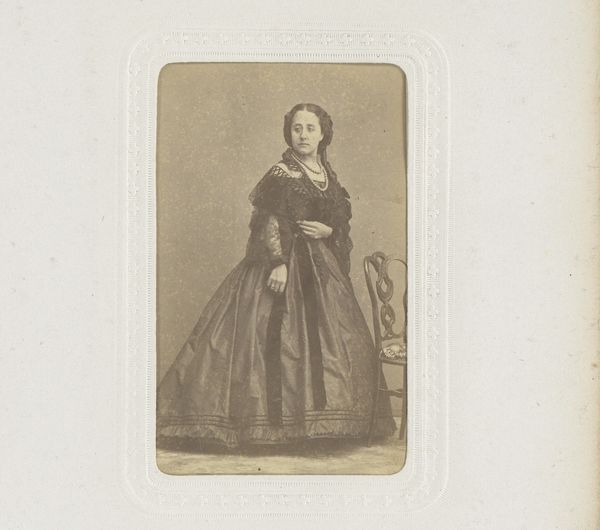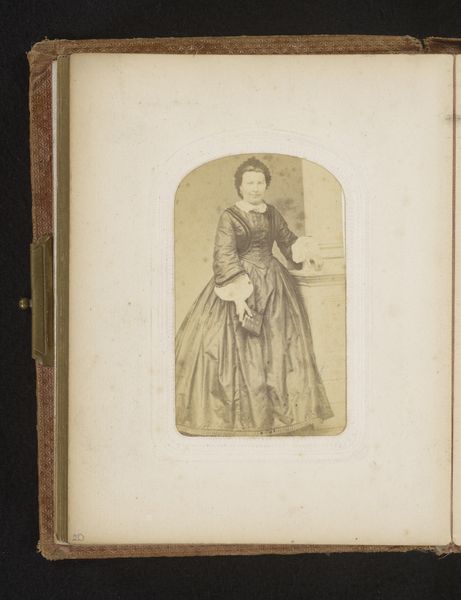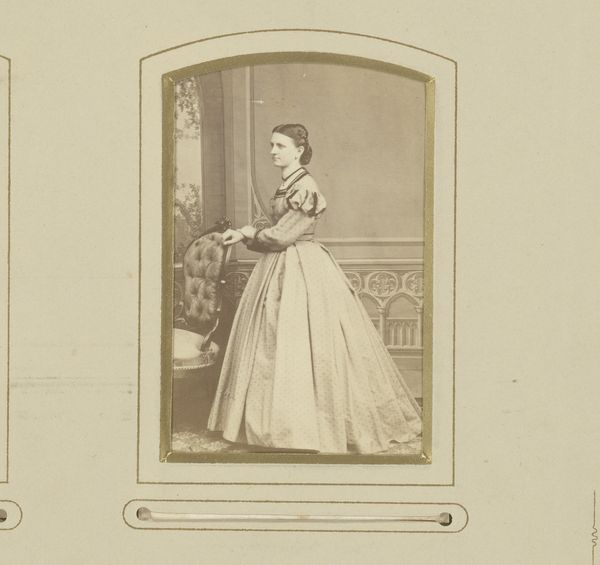
Portret van Charlotte van België, aartshertogin van Oostenrijk en keizerin van Mexico 1855 - 1870
0:00
0:00
photography
#
portrait
#
photography
#
historical photography
#
19th century
Dimensions: height 85 mm, width 53 mm
Copyright: Rijks Museum: Open Domain
André-Adolphe-Eugène Disdéri captured this image of Charlotte of Belgium, Empress of Mexico, using photography, a relatively new medium at the time. Note Charlotte’s distant gaze, directed away from the viewer and into the distance, a pose laden with the weight of prophecy. This averted gaze echoes throughout history, from ancient Roman portraiture to Renaissance depictions of melancholic figures. It’s a visual motif deeply rooted in our collective memory, signifying introspection, and perhaps, a sense of foreboding. Consider the act of turning away, and the gesture of leaning on the chair as a symbol that has evolved through time. While classical sculptures portray gods and emperors leaning on scepters to symbolize power and authority, Charlotte leans on a chair in a gesture of dependence. What does it mean in the evolution of this gesture, now adopted by a female figure? The emotional impact lies in the composition itself—a lone figure, set against a neutral backdrop, inviting us to contemplate the psychological burden of her royal destiny. This image, therefore, serves as a potent reminder of how deeply symbols resonate within our subconscious, transcending time and culture to evoke profound emotional responses.
Comments
No comments
Be the first to comment and join the conversation on the ultimate creative platform.

